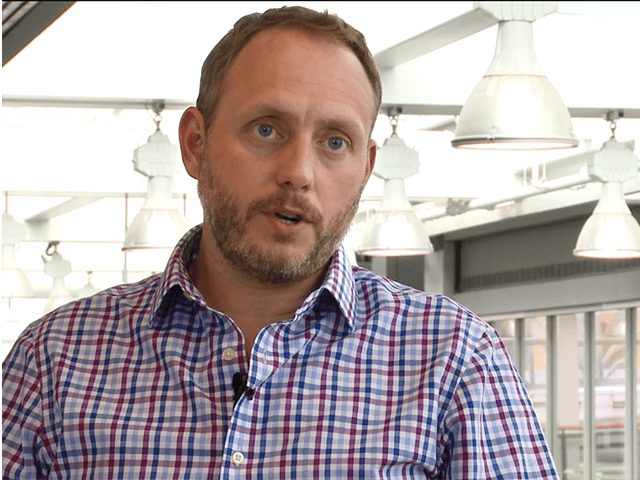The evolving role of the CEO: The Best in Klass Enterprise SaaS series
By Will Anderson | June 20, 2016

The Best in Klass Enterprise SaaS is part of the MaRS Best Practices series brought to you by Klass Capital and the MaRS Work & Learning cluster. This series is designed for founders of enterprise SaaS ventures at the seed stage through to series A. At each session, a CEO of a post-series A, rapidly scaling enterprise SaaS venture will share their expertise and lead the discussion on key topics such as growth strategies, pricing, operations, culture and talent. For more details, please contact Alexandre Turcotte.
Will Anderson, CEO of Resolver Inc., spoke recently at one of our Best in Klass sessions.
One of the least understood aspects of the role of the CEO is how it changes and evolves as a business scales. The faster your business scales, the quicker you have to adapt as an operator.
As a new CEO myself, I often reach out to operators of larger businesses to learn how their roles have evolved and how they spend their time.
In my opinion, there are four key things that should be top of mind for you—an early-stage CEO—when thinking about how your role will change as your business scales.
1. Your job as CEO comes down to three things: execution, strategy and culture.
As your business scales, you will need to shift your focus. For a small business (10–20 employees), it is all about execution. It is not worth thinking about strategy or culture if you can’t afford to pay your employees at the end of the week. Essentially, if you don’t sell, you don’t survive, and that makes execution the most important thing.
Once you start hiring managers, and managers of managers (30–50 employees), you cannot keep worrying about the nuts and bolts of every facet of the business. Your role will shift toward keeping the business aligned so that everyone is pulling in the same direction. You achieve this alignment via strategy (what the organization is trying to do) and culture (how the organization does it.)
When an organization is small and everyone is working on things together, the strategy can be largely informal. The CEO is working closely with the team and can very directly communicate what the organization is doing and solicit input informally. In a larger organization, you will need to be more formal in articulating the strategy. This largely comes down to setting a vision of why the organization exists and then defining where you will play (what customers you target) and how you win (what makes you different).
Defining this is not a one-time job. You need to be constantly scanning internally and externally for information and communicating the vision and strategy at every opportunity. Much like in advertising, you need to repeat things about 10 times before they sink in. If you do not do this, the team will be uncertain of the direction, which will result in people working at cross purposes.
Vision and strategy define where you are going, but what’s equally as important is how you get there. Culture drives how your company will execute and achieve its vision. Like strategy, culture is very organic for a small organization, but requires more care in a larger one. If you do not manage culture in a large organization, one will certainly emerge—but it may not be optimal or well matched to your vision. Without a guiding hand, different parts of the organization will likely develop their own cultures based on their leaders, and these have a high probability of being mutually incompatible.
Managing a culture is a combination of hiring the right people, setting the right incentives, implementing performance management systems and defining key values. When defining values, it is important to articulate them. If those values do not fit with the people that you hire, the incentives system or the actions of your executives, they will cause confusion. For instance, if you want your employees to take risks and be creative, you can’t punish them when they try and fail!
2. Be a hedgehog about your vision, but operate like a fox!
The philosopher Isaiah Berlin wrote in his famous essay “The Hedgehog and the Fox” that “a fox knows many things, but a hedgehog one important thing.” The concept, as recently popularized by James Collins, Philip Tetlock and Nate Silver, is that a fox constantly questions things and weighs probabilities, whereas the hedgehog focuses on one big thing and drives it forward.
As a CEO, you need to be a fox. As your business scales, you get further and further away from the front line and you will be dependent on intermediaries for information. All intermediaries, consciously or not, bring their own biases to the information they present. Most of what is presented as fact is actually a hypothesis and is designed to lead to a specific conclusion. Additionally, you will have your own biases and blind spots.
In the face of this, it is important to retain a healthy skepticism and seek out different points of view. The fox is careful and changes its mind as the facts change. You need to think in terms of probability and test hypotheses. As the CEO, you are the final line of accountability. Even with great information and analysis, you are going to make mistakes. The key is to learn, iterate and get better each day.
There is only one problem with being a fox: the lack of certainty and confidence makes investors, employees and customers very nervous!
So while it is important to think like a fox when making key decisions, you need to be a hedgehog about your vision. Once set, you need to be unwavering and willing to pound through obstacles rather than constantly changing directions. Ask your stakeholders to make one big bet with you and drive towards that vision. Then, make sure that your day-to-day thinking is more fox-like.
3. Picking the right investor is critical and the right investor is not always the highest valuation.
Great investors are more than a source of capital. They can help with recruiting, use their connections to help you sell, provide strategy and tactical advice, and act as a sounding board. The problem is that great investors are in high demand and that means that they do not have to pay top dollar. Smart entrepreneurs know that great investors will add value. The long-term benefits will outweigh a lower valuation today.
The key to finding the right investors is to articulate your goals and narrow down the field to only include investors that are aligned with your vision and values. If investors are looking to exit after three to five years but you want to build a great business over 10 years, it is not going to work. The investors you pick are going to be a very important part of your life. It is critically important to pick people that you respect and like.
4. Your job is not to maximize shareholder value.
While investors may not like this point, the role of the CEO is not to maximize shareholder value. The purpose of any enterprise is to deliver a product or service to their customers. That is not to say that you do not have to offer shareholders a great return. Capital, like labour, is an input. There is a market price for it. Maximizing returns to shareholders is akin to saying that you are going to maximize employee earnings. Certainly you want to pay above market—but there needs to be a balance between all of the stakeholders.
In the end, the best companies focus on delivering exceptional value to customers. Customers are the source of your revenue, which is where the flows to all other shareholders are derived. If you do great things for your customers, you will be rewarded with above-average prices, which will make rewarding employees and shareholders much easier.
https://vimeo.com/168690979
 Will Anderson
Will Anderson